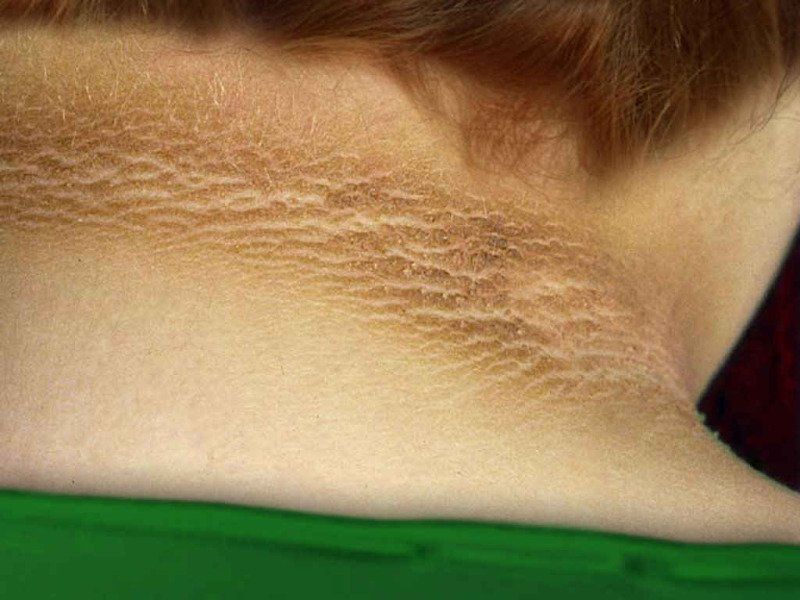Acanthosis nigricans is the medical name for dry, dark patches of skin that usually appear in the armpits, neck or groin. It could be a sign of an underlying condition, so it needs to be checked by your GP.
How do you know if you have Acanthosis Nigricans?
The main symptom is patches of skin that are darker and thicker than usual. They can appear anywhere on the body, the patches are dry and feel similar to velvet
They’re most common in skin folds, such as the armpits, neck or groin and some people also have tiny growths on the patches
The patches often appear gradually without any other symptoms, but sometimes the skin may be itchy.


Although it’s usually harmless, it’s best to get any skin changes checked out because in rare cases it can be a sign of something more serious such as cancer.
What causes Acanthosis Nigricans?
The most common cause of acanthosis nigricans is having raised insulin levels (more about this below) hence it is more common in overweight people.
Other causes include:
- prediabetes or type 2 diabetes
- conditions that affect hormone levels – such as Cushing’s syndrome, polycystic ovary syndrome or an underactive thyroid
- taking certain medicines – including steroids or hormone treatments like the contraceptive pill
- in rare cases, cancer – usually stomach cancer
- in rare cases, a faulty gene inherited from your parents
Sometimes Acanthosis Nigricans happens in healthy people with no other conditions. This is more common in people with dark skin.
Why is Acanthosis so devastating?
Why can acanthosis be so devastating? Acanthosis may potentially occur with lymphoma or when a cancerous tumour begins to grow within an internal organ. This is a major factor as to why if Acanthosis occurs on yourself, it is vitally important to get it checked by a GP. Whilst the chance of this is very small, there is still a chance of a potential tumour occurring.
Two more risk factors of acanthosis are Race and family history. Studies show that within the United States acanthosis commonly occurs within native Americans and that its presence suggests insulin resistance due to the high prevalence of Type 2 diabetes within native Americans as they have a higher chance of getting diabetes than any other US racial group.
If acanthosis is prevalent within your family, then it has been proven that there is a higher chance of acanthosis appearing. If you are unsure about if you have acanthosis and if it is in your family history then it is best to get checked by a GP, due to the potential health risks that come with the condition.
What is the treatment for Acanthosis Nigracans?
There is no treatment as such, but the good news is that if you improve your diet and lifestyle, you can bring your sugar back under control, your insulin levels will normalize and the dark, raised patches often fade over time
As ever drop us a line with any queries – no pressure – just helpful qualified, professional advice.





